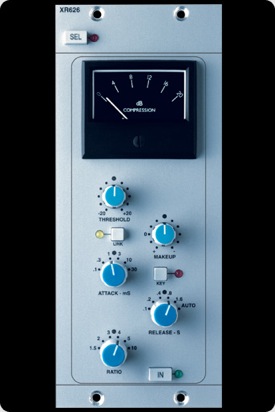
The Quest for Glue: Part 1

So I’ve been experimenting with something on and off for the last year on my live mixes: the 2-Buss compressor. There’s nothing new about the concept, and it has been a staple of many big name studio mixers for years. I got the bug to start playing with it in a live setting after hanging out with James Rudder a couple years ago when he was mixing Hillsong United. He had an Alan Smart C2 on his L/R on the PM5D he was using, and it just seemed to make things better and a little more exciting. So today I’m going to look at a little of what I’ve discovered playing around with this technique, but first a warning:
Compressing the master bus is dangerous because compression is dangerous. Just like using a compressor on individual inputs, there can be a fine line between making helping something and hurting it. Creating a lifeless sound is a tweak away from something exciting. The risks are multiplied when compressing the master bus because the entire mix is put at stake, so I think you need to have a good understanding of using compressors before going down this road.
I think a big part of why I’ve started gravitating towards using a compressor on my 2-buss is partially related to the differences between mixing on analog and digital consoles. One of the things about analog that I think we sometimes miss in the digital realm is the sense of glue it can impart on a mix. Glue is a hard thing to explain, but it’s basically the sense that the music is together as one piece. Maybe a better way to describe this is what it’s not. A mix lacking glue can sometimes have a karaoke feel. Sometimes I think of a lot of home/budget recordings this way. It’s almost like there are a bunch of instruments playing, but there’s no cohesion between them. My theory behind this is in no way scientific, but I believe this perception of analog glue comes from a combination of things including subtle bits of saturation/harmonic distortion and pseudo-compression/limiting on inputs and within the summing buss of the console. Chris Lord-Alge has described his SSL console as bending. When things get pushed in the analog world, it gives a little. Peaks get rounded a little. Things get smoothed off. Random bits of distortion/saturation make the mix seem bigger, wider, and more open. If you grew up on analog and switched to digital, I think this stuff can in some ways make analog mixing feel easier.
Digital, on the other hand, is unforgiving. What happens in the console is a math problem. When the balance of things is off, digital equipment doesn’t help the same way that analog sometimes can. This doesn’t mean that digital mixing is bad, sometimes it just takes a little different approach and maybe a bit more work at times.
In the meantime, the race is on these days to get the digital world to better emulate the analog world we grew up from, and there are a lot of great products that can help emulate the sound a bit. However, I don’t think we’re going to get there completely right now because I believe a big part of the analog stuff we like is inherent in the way things are summed together. To truly emulate this analog summing behavior I believe it will need to get coded into the summing side of our digital gear. We can insert things on our master bus and our inputs that give us some of the effects we’re used to, but ultimately what we’re after is something that I believe happens under the hood. We need a new way of doing the math. The cool thing is that once the engineers get this incorporated into our gear, we will probably have different ways of controlling how it works which is something you don’t get in the analog world; in analog you’re stuck with the gear you’ve got and what it does to your sounds.
So back to this 2-buss compressor thing. A big part of why I’m liking it is because of the sense of glue it can impart on a mix. In my next post, I’m going to start exploring this glue stuff a bit deeper.





Have you ever heard Pro Tools 9 HD’s HEAT in person? Interesting idea Avid’s got there… Ultimately, I predict, that high end digital consoles will have tubes built in that can be used for analog operations. I know that my Hammond XK3 has a real tube built in for overdrive. Love it!